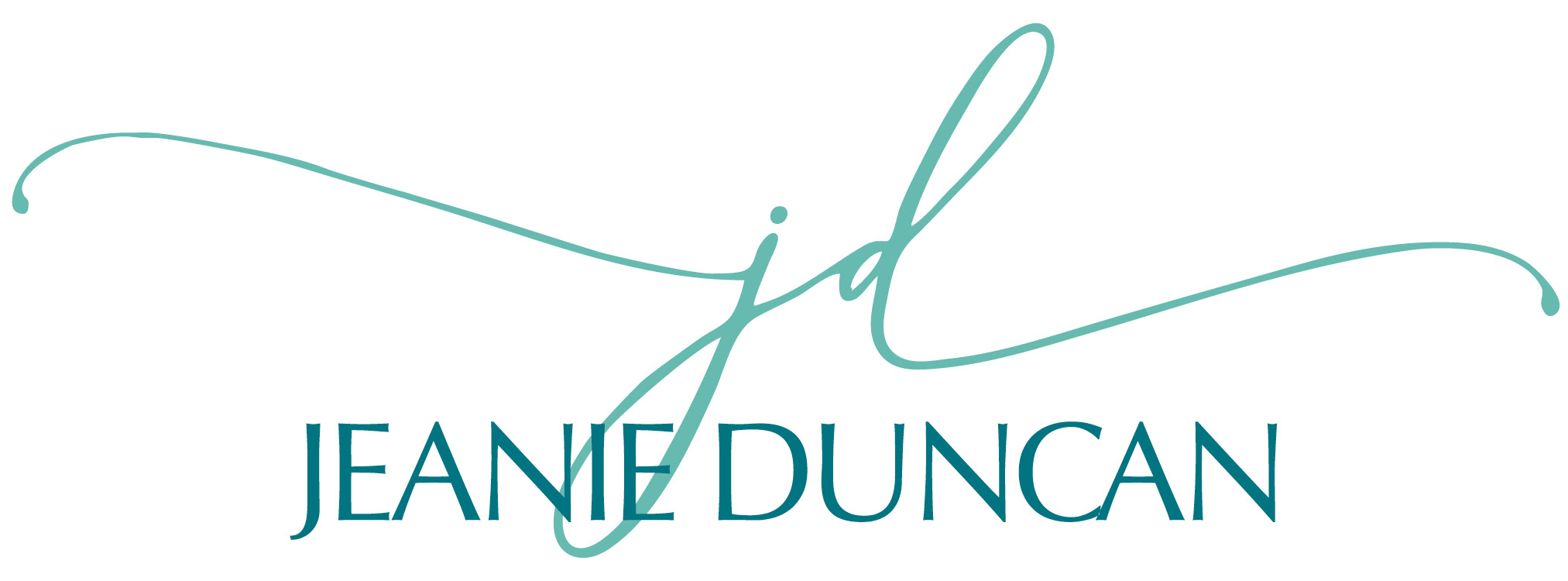
Mar 11, 2014 | Leadership, Transition & Change
In my latest blog post (“Leading with Compassion and Authenticity,” February 18) I wrote about a favorite leadership book, “Leading with Authenticity in Times of Transition” by Kerry Bunker and Michael Wakefield. As a continuation of that post, I want to share the specific leadership competencies highlighted in the text that are critical for leaders navigating the complex challenges of transition. These competencies are presented as pairs (representing both the structural and people side) and graphically displayed as a wheel to demonstrate their interrelatedness and the need for balance.

Bunker and Wakefield use the image of a bicycle wheel to describe the leadership competencies, reflecting that each spoke needs to be tightened or loosened to the right tension. Otherwise, there will be strain on the other spokes, pulling the wheel out of alignment. Six spokes represent the structural competencies, and six the people-related competencies. If a leader devotes an overabundance of energy to any one competency, s/he runs the risk of skewing the opposite and pushing the wheel out of true, creating undue strain on the trust needed to lead effectively. The key is to find appropriate ways to work with both sides that are authentic to the leader and avoid swinging dramatically from one side to the other.
I find this resource very helpful in conceptualizing the core elements important to navigating change and transition as well as the need for balance among them. Most leaders are quite skilled at dealing with change and solving problems from the structural side of leadership – the plan, rationale, data, and measurements. Posing a much greater challenge for most is connecting to the people side of change – the emotions, discomfort, letting go, and rebuilding. Central to it all is trust, without which success in transition cannot exist.
Consider this example: A nonprofit arts organization had recently undergone a strategic planning process that included extensive community input data gathering. This led to a reshaping of priorities and key areas of focus for the organization, which re-defined its core lines of business. As a result, the organization ceased two primary areas of its operation. From this redefining, the organization aligned its leadership, resources, business strategy, and culture to support this new model. Among other things, the action led to a redesign and reduction in both board and staff leadership. By any measure, this was substantial change to this agency.
A true test for the organization was how it dealt with the more emotional side of the human elements of transition. While they handled the mechanics of the change well: strategy, planning, gathering community input, and defining core areas of focus and lines of business, the organization fell short in leading the more human dynamics of the transition: allowing for time and space for emotional processing, feeling discomfort, dealing with resistance, and appreciating differences in how people cope with change and taking those perspectives into account.
I see this frequently with the organizations and executives with whom I work. Strategic planning processes like these take a lot of time, effort, and energy. When a plan is done, it’s easy to feel like you’ve reached the finish line. It’s much harder to realize you’re only half or two-thirds finished, and that a critical component of your work is yet to be done – addressing the more sensitive people issues and empowering a team to embrace the change and help shape and lead the future.
As Bunker and Wakefield note, “change initiatives often break down because people stall somewhere during the transition.” Ignoring or falling short in this area will greatly impact the overall success of a transition. With the organization example above, the ‘less than ideal’ handling of the human elements created a turbulence that was felt for years after. These missteps are painful to recover from.
A highly skilled leader lives through the process of transition with others in a genuine and authentic way. They help their people flex and adapt, and foster their ability to contribute in new and meaningful ways. Here’s an overview of the twelve competencies:
Catalyzing Change versus Coping with Transition
Catalyzing Change is championing an initiative or significant change. A leader who is skilled at catalyzing change consistently promotes the cause, encourages others to get on board, and reinforces those who already are. Such leaders are highly driven and eager to get others engaged in new initiatives.
Coping with Transition involves recognizing and addressing the personal and emotional elements of change. Leaders who are able to cope with transition are in touch with their personal reactions to change and transition and make use of that emotional information. They lead by example.
Sense of Urgency versus Realistic Patience
Sense of Urgency involves taking action quickly when necessary to keep things rolling. Leaders who have a strong sense of urgency move fast on issues and accelerate the pace for everyone. They value action and know how to get things done.
Realistic Patience involves knowing when and how to slow the pace to allow time and space for people to cope and adapt. Leaders who display realistic patience appreciate the fact that people learn and deal with change differently and do not judge them based on their own styles, preferences, or capabilities.
Being Tough versus Being Empathetic
Being Tough denotes the ability to make difficult decisions about issues and people with little hesitation or second-guessing. Leaders who are comfortable and secure with themselves can display toughness; they’re not afraid to take a stand in the face of public opinion or strong resistance.
Being Empathetic requires taking others’ perspectives into account when making decisions and taking action. Empathetic leaders try to put themselves in other people’s shoes; they’re able to enhance their own perspectives by considering the views of others.
Optimism versus Realism and Openness
Optimism is the ability to see the positive potential of any challenge. Leaders who exude optimism can communicate and convey that optimism to others.
The combination of Realism and Openness denotes a grounded perspective and a willingness to be candid. Leaders who practice this competency are clear and honest about assessing a situation and the prospects for the future. They are candid in communicating what is known and not known. When managers exhibit realism and openness, they speak the truth, don’t sugarcoat the facts, and are willing to admit personal mistakes and foibles.
Self-Reliance versus Trusting Others
Self-Reliance involves a willingness to take a lead role and even to do something yourself when necessary. Self-reliant leaders have a great deal of confidence in their skills and abilities and are willing to step up and tackle new challenges.
Trusting Others means being comfortable with allowing others to do their part of a task or project. A leader who trusts others is open to input and support from colleagues and friends. Such leaders respect others and demonstrate trust through a willingness to be vulnerable with them.
Capitalizing on Strengths versus Going Against the Grain
Capitalizing on Strengths entails knowing your strengths and attributes, and confidently applying them to tackle new situations and circumstances. A leader who knows how to capitalize on strengths trusts the abilities that have generated success, rewards, recognition, compliments, and promotions in the past and uses them in new situations.
Going Against the Grain entails a willingness to learn and try new things, even when the process is hard or painful. Leaders who can go against the grain are willing to get out of their comfort zones. They are willing to tolerate discomfort if it leads to learning.
I don’t know about you, but when I read these competencies, I see that there are some inherent conflicts between them. In the face of change and turmoil, it’s interesting that people look for those who are simultaneously strong and vulnerable, heroic yet open, demanding while compassionate. Leading well often feels like an impossible balancing act. It can be exhausting!
For me, I think it’s most about knowing yourself as a leader. Knowing what is genuinely, authentically you and applying that consistently and well over time. And when you have those critical learning moments, take the new discoveries and further polish and refine your leadership skills.

photo credit: left-hand via photopin cc

Feb 18, 2014 | Leadership, Transition & Change, Uncategorized

One of my favorite leadership books is “Leading with Authenticity in Times of Transition” by Kerry Bunker and Michael Wakefield. For a business world awash in leadership titles, this one is a particular jewel because of its focus on the complex human dynamics of transition. I find that organizations are often quite adept at addressing the structural side of change – reorganizing, restructuring, creating new vision, mission, strategy, and so on. What I see far more struggle with is leading and attending to the human side of change – letting go, grieving loss, building hope, and exhibiting compassion.
With high expectations and great demands on our time, the tendency is to fast forward through, or skip altogether, the space needed to reflect on and process the emotional impact resulting from change. But when these emotions are not accepted and addressed as natural and important components, resistance can intensify over the change continuum.
In my career, I’ve served in a number of executive leadership roles for nonprofit organizations. Often, we faced significant organizational change that involved not only our own organization, but also stakeholders and other partnering community groups.
From my experiences, I’ve learned that addressing the delicate human dynamics of change is absolutely critical. A question I ask is “where do you want the pain?” For me, it’s a point of either leaning in to these elements early on – shortly after the change event is announced and acknowledged – or coming back to it later in the process when an organization is trying to implement new process and structure. I find it far better (after much practice, and even failure) to meet it early on. It’s arduous, messy, the process takes longer…and it is absolutely the right thing to do. Get it right, and the resultant implementation can soar.
From these experiences, I’ve grown as a leader, developing compassion, concern, and genuine care for my team and others – a much-needed muscle to lead effectively. Early on, it didn’t come naturally. I wanted to move fast, make decisions, take action, and move on. And I see this in many organizations I work with today.
As Bunker and Wakefield point out, leaders must:
- Examine their behaviors and emotions tied to change and transition. This begins the process of operating from a place of authenticity as a leader.
- Establish and protect trust. Without trust and honesty, authenticity and credibility suffer – undermining otherwise solid change initiatives or management decisions.
- Find a balance between structural leadership and people leadership. By learning important competencies for leading in times of change and transition, leaders gain a new perspective from which to operate.
Later this week, I’ll post more on key leadership competencies critical for transition. What are some of your successful practices in leading through transition?
“You get the best effort from others not by lighting a fire beneath them, but by building a fire within them.”
–Bob Nelson

Jan 27, 2014 | Leadership, Transition & Change
Study after study reinforces the impending turnover of top leadership in the nonprofit sector – and potential crisis as a result – with roughly 67 percent of executive directors and CEOs reporting that they plan to leave their jobs within the next five years, according to Daring to Lead, a study by the Meyer Foundation and CompassPoint.
Read the article.

Aug 27, 2013 | Career, Coaching

I am a coach today because I’ve experienced coaching’s transformative power in my own life.
Over my career, I’ve worked with several coaches. I’ve hired them for career and leadership related priorities, but every time the impact of the coaching has been much farther-reaching, affecting me deeply as a whole person.
I remember the first time I hired a coach – I was contemplating a critical career move, pursuing the President and CEO position of a large nonprofit arts organization. At the time, I was director of development for the organization, a position I had held for several years. I was really excited about the opportunity; I felt ready for it, and the timing seemed right to me. But before making my thoughts known to my organization’s board and others, I wanted to be sure I was the right person for the job.
Because I was already internal to the organization, I knew how important it was for it to have the ideal leader who would bring great energy, fresh perspective, and new ideas. I wanted to test my assumptions that I was that person. At the time, I didn’t really know exactly what a coach did or how one would approach his or her work. I just knew that I needed a professional with whom to brainstorm confidentially—someone who could help me work through my critical career decision.
My coach listened to my story and asked a lot of questions. Her probing peeled back the layers and made me think of this transition, my readiness, and fit in ways I hadn’t previously…and wouldn’t have been able to do alone. I liked how she stretched and challenged me. It wasn’t simply what I thought, but why I held my thoughts and beliefs, and the impact of the actions I took based on those ideas.
The questions my coach asked seemed so simple, yet they were powerful and razor-sharp. Have you ever had an experience that made your head spin? This is what I remember about these encounters: I’d leave the session and need to sit in my car awhile before I could drive away. The shift she helped me create was profound.
After a few sessions, I confirmed my decision to pursue the opportunity, and in 2003 I was appointed to the position of President and CEO. It was exhilarating! I loved my new venture, and I went to work eagerly on my vision and goals for leading this great community organization.
About six months into my new role, I felt myself searching for a strategy partner – someone who could be a sounding board for my big dreams and ideas, as well as my frustrations, fears, and uncertainties. I wanted someone I could really trust and be vulnerable without fear. I had truly begun to understand the cliché, “It’s lonely at the top.” I could count on three fingers the number of people in whom I could confide. And none were quite who I needed to challenge and stretch me and to hold me accountable. So, for the second time in my career, I hired a coach.
“Our deepest fear is not that we are inadequate. Our deepest fear is that we are powerful beyond measure. It is our light, not our darkness, that most frightens us.” –Marianne Williamson
I remember the relief I felt when I found my new coach. With him, I didn’t have to be careful with my words, politically correct, or worried about what I said. It was completely freeing…and deeply empowering. He didn’t give me advice, problem-solve, or tell me what to do. But rather, my coach was my partner, posing thought-provoking questions and encouraging me to tap into my own inner wisdom and sense of knowing for direction. It was like an intense workout to develop new muscle.
I worked with him for about a year, and then asked for his help again years later when I made the decision to step down from my position. I knew I had completed what I set out to do in the role, but I wasn’t sure what I most wanted to do next. In working with my coach, I decided to take a year off to clear my mind, explore creative pursuits, and simply relax and play. It gave me much-needed time and space to ‘incubate’ what would come next.
During this year off I began to shape my own business. When I freed up my “internal hard drive,” I realized more clearly what I loved most and wanted to do. I had derived great satisfaction from helping organizations and their leaders tackle tough business issues, crises, and transitions. In my work, I often had been called upon to help nonprofit organizations with challenging matters related to funding, personnel, governance, and programming. I reflected on my best work in assessing and navigating the complexity of these uncertain and often turbulent situations and inter-relationships. My coach helped me see that this work I’d been doing—and really enjoying—was organizational and individual coaching.
I proceeded to complete training and certification through the Coaches Training Institute (CTI), the largest and oldest coach training organization in the world. Coaching is a core part of my business today because of my own personal experience in working with a coach and my passion for helping others navigate their challenges and opportunities and realize their greatest potential. I continue to experience coaching’s transformative power in my life, and I am gratified to see its impact on my clients. I can think of no greater joy.
 About Jeanie Duncan: Jeanie is President of Raven Consulting Group, a business she founded that focuses on organizational change and leadership development in the nonprofit sector. She is a senior consultant for Raffa, a national firm working with nonprofit clients to lead efforts in sustainability and succession planning, executive transition and search. Additionally, Jeanie serves as adjunct faculty for the Center for Creative Leadership, a top-ranked, global provider of executive leadership education.
About Jeanie Duncan: Jeanie is President of Raven Consulting Group, a business she founded that focuses on organizational change and leadership development in the nonprofit sector. She is a senior consultant for Raffa, a national firm working with nonprofit clients to lead efforts in sustainability and succession planning, executive transition and search. Additionally, Jeanie serves as adjunct faculty for the Center for Creative Leadership, a top-ranked, global provider of executive leadership education.

May 10, 2013 | Intention, Uncategorized

Ok. Seriously. I’m laying in my back yard hammock for a few minutes this morning (yes, it’s a work day…Friday). And, I can’t deny that I’m feeling guilty for doing it. I have a mound of work to complete. But, I’m trying to practice what I preach with my “Do Less. Achieve More.” post last Sunday. So, here’s a brief highlight of my experience this week in practicing those tips!
– Focus on the important tasks first. At the beginning of every day – and sometimes the night before – I spent 30-60 minutes getting my game plan set for the day. I can’t tell you what a huge difference this made. Knowing the top 3 things that MUST get done kept me razor-sharp focused. Most days, I accomplished those priorities before lunch. It helped me: say no to a lot of things, let my phone go to voicemail, and check email later (and far less frequently). Those micro interruptions are tempting, powerful derailers!
– Single-tasking. This was one of my greatest areas of practice this week. And what a difference it made! One exercise I tried was walking away from my computer and other distractions while on the phone with clients, friends, and family. I intently focused on my “subject” and our conversation. The outcome? I really ‘heard’ what they had to say. Imagine that! I was focused, engaged, and the call was often shorter because of it. And more meaningful. I’ll bet they noticed too.
– Eliminate non-essential commitments. I’m a natural-born networker and relationship builder. I both love it and hate it. I am attracted to invitations to lunch, coffee, wine, etc. like a mosquito to one of those bug lanterns. Before I know it, I can meet with people all day long and have nothing to show for it at five o’clock except great conversation and a small stack of business cards. This week, I found myself more mindful and purposeful as I said yes – and no – to such invitations. Dare I say, I was far more “strategic.” For me, it’s absolutely critical to be discriminating in choosing whether or not to commit to these engagements. By doing so, I focus my time and energy on what’s most important and matters most to my goal achievement.
 – Step away and take a break. See? I’m doing that right now! Even if only for a few minutes – relaxing in a hammock, shooting a few hoops with my son, walking around the block, or going for a quick noon-time run – the brief respite gives me volumes of energy and joy in exercising my choice (remember that?) to just breathe and enjoy a few moments of “me” time. I return to my work and can perform it better, faster, and with a fresh perspective and ideas I wouldn’t have had otherwise. Try it! Seriously. (And stop making up the story you tell yourself: “I don’t have time.” Because you do.)
– Step away and take a break. See? I’m doing that right now! Even if only for a few minutes – relaxing in a hammock, shooting a few hoops with my son, walking around the block, or going for a quick noon-time run – the brief respite gives me volumes of energy and joy in exercising my choice (remember that?) to just breathe and enjoy a few moments of “me” time. I return to my work and can perform it better, faster, and with a fresh perspective and ideas I wouldn’t have had otherwise. Try it! Seriously. (And stop making up the story you tell yourself: “I don’t have time.” Because you do.)
I’ve had fun with this “Do Less. Achieve More.” theme this week. Talk about immediate gratification! A little practice went a long way in delivering some powerful results. What’s working for you?
~ ~ ~
Jeanie is President of Raven Consulting Group, a business she founded that focuses on organizational change and leadership development in the nonprofit sector. She is a senior consultant for TransitionGuides, a national firm working with nonprofit clients to lead efforts in sustainability and succession planning, executive transition and search. Additionally, Jeanie serves as adjunct faculty for the Center for Creative Leadership, a top-ranked, global provider of executive leadership education.












